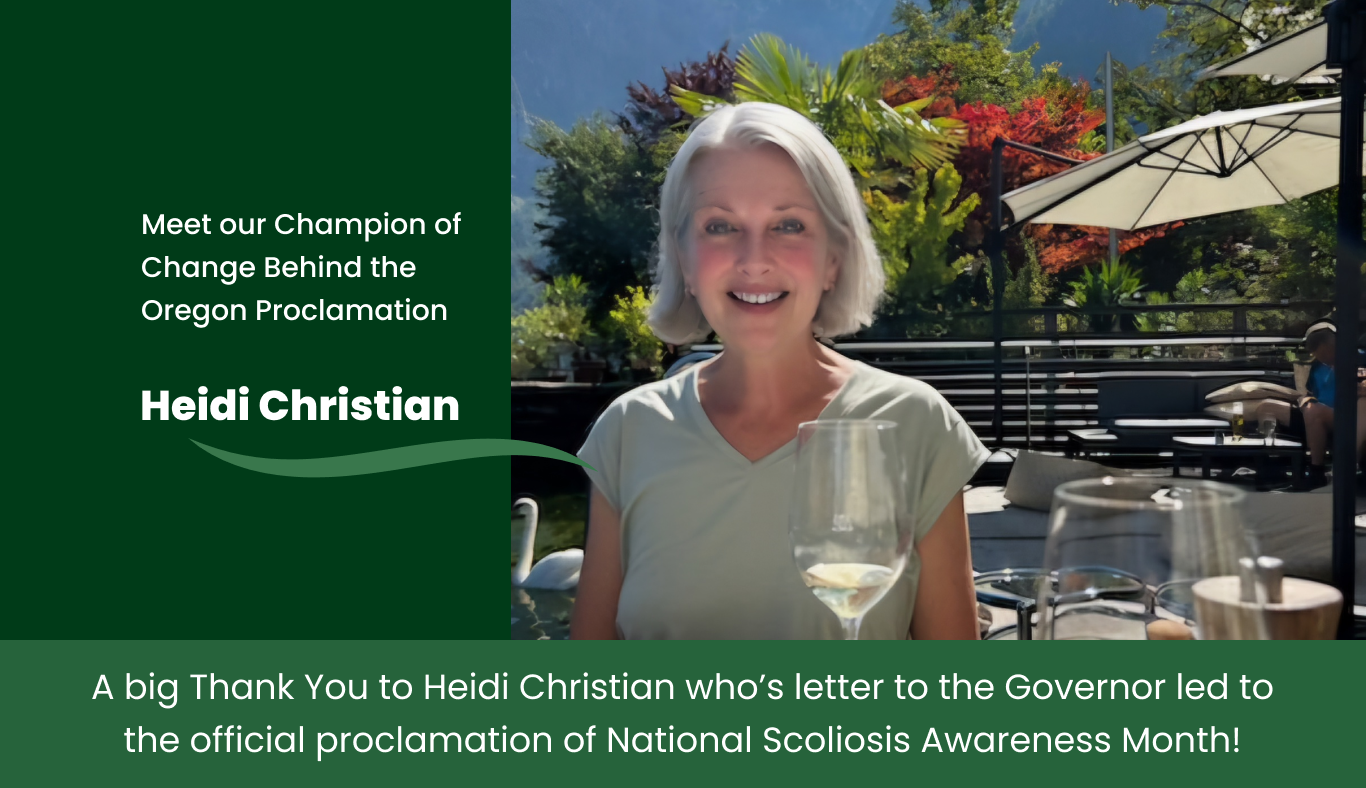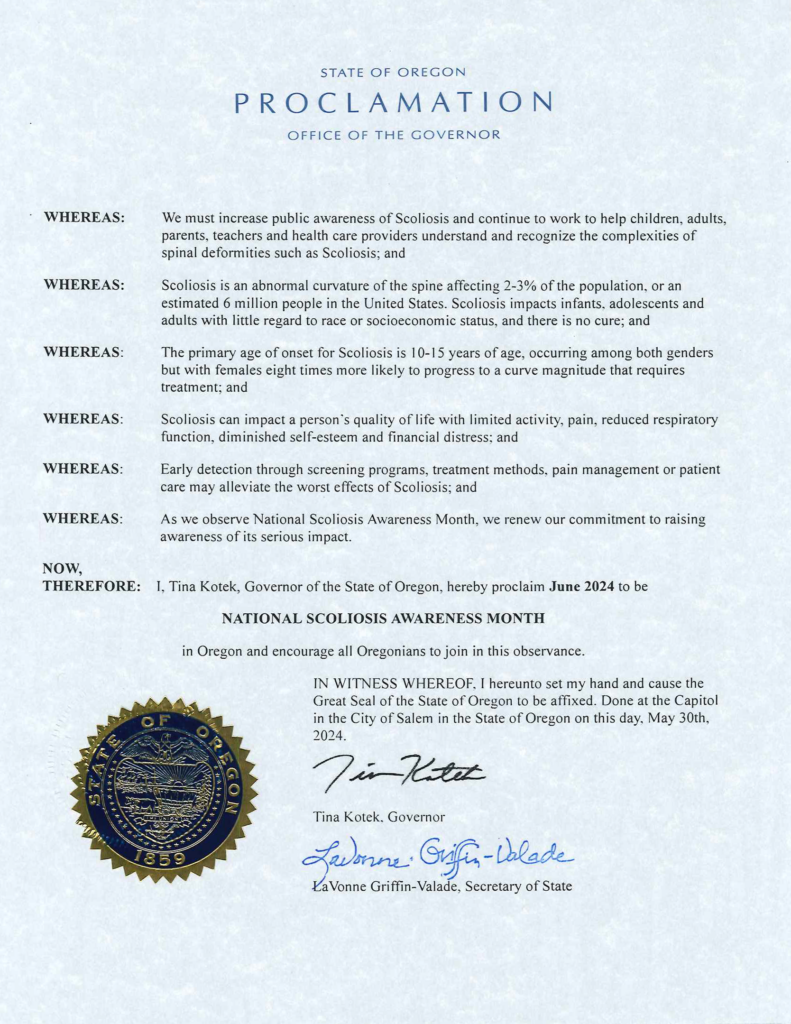Thank You Heidi Christian!
Governor Tina Kotek of Oregon has officially proclaimed June 2024 as National Scoliosis Awareness Month due to the incredible efforts of Heidi Christian, whose heartfelt letter to the Governor served as the catalyst for this important proclamation. Heidi’s personal journey with scoliosis is a living example of why early detection is so crucial and why further research is needed. Her dedication to raising awareness and advocating for the scoliosis community has truly made a difference. Her passion and commitment inspire us all to continue our efforts in advocacy, education, and public awareness. Thank you, Heidi, for your unwavering support and advocacy!
Read Heidi’s letter to the Governor:
Governor Tina Kotek
Oregon State Capitol
Salem ORDear Governor Kotek:
As a constituent and a person living with Scoliosis, I am writing to ask you to please declare June 2024 to be National Scoliosis Awareness Month in Oregon and sign the attached proclamation request.
National Scoliosis Awareness Month is observed in June to disseminate information about Scoliosis and highlight the need for education, early detection, and public awareness of the physical, emotional, and economic impact of this condition. With recent studies showing the benefits of bracing, early detection is more important than ever, as is increased public awareness.
Currently Oregon has no screening mandate for Scoliosis in public schools. I am hopeful, as you look toward improving the outlook for Oregon’s children, Governor Kotek, you will consider Scoliosis screening, too.
Scoliosis has affected my life. First diagnosed as a junior high student in 1974, I was prescribed a Milwaukee brace. My “S” curves which were stabilized, yet not corrected, held steady from the time of treatment through a routine x-ray taken in 2008. However, by 2012, those curves made a surprising progression to demand an eight-level (T9-L4) anterior and posterior fusion surgery at age 52.
This 8-hour surgery involved two procedures to lessen the Scoliosis curves and correct the twist with two twelve-inch titanium rods, fourteen pedicle screws, and a discectomy with PEEK cage placement. It required six days in OHSU Hospital, four months of convalescence at home in a TLSO brace, physical therapy, and one full year of gradual healing; it cost $180,000 in 2013 just for the surgery and hospital stay, plus more for doctor visits, radiology, medication, etc.; it meant a change in career for me, too.
By officially signing the National Scoliosis Awareness Month proclamation for Oregon, you will help highlight the need for education, early detection, and awareness of Scoliosis. The goal is for every state to officially declare, by proclamation, their observance of National Scoliosis Awareness Month during the month of June and I am hoping our State of Oregon will again join in!
Thank you for your consideration.
Sincerely,
Heidi Christian










